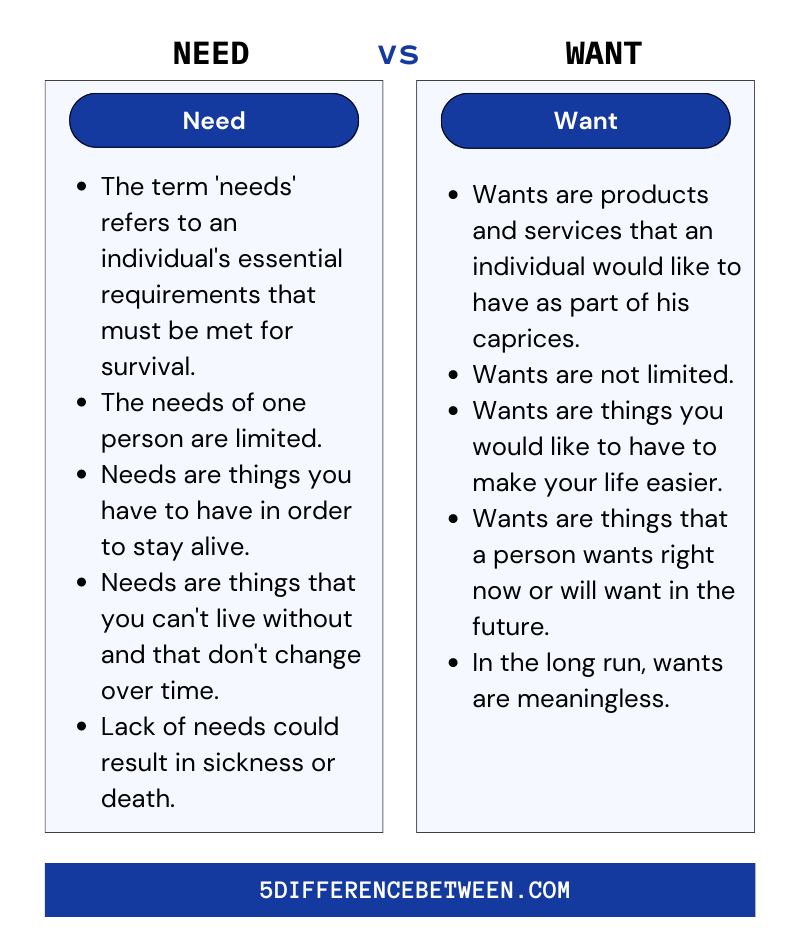We often use the words “needs” and “wants” equally in our daily lives. Even though needs and wants are sometimes used interchangeably, there is a big difference between the two, especially regarding money and economics. You must have a need to live, while a want is just something you want but don’t need to live. This is the main difference between wants and needs. Here we discuss the difference between Need and Want with examples of how they differ.
What is Need?
When we talk about “needs,” we mean things a person must have to live a good life. They are important for an organism to live because they are emotional, psychological, cultural, social, etc.
Also Read > Difference Between White and Black Pepper
In the past, the three basic wants of man were food, clothing, and a place to live. Education and health care also became important as time passed because they made life better. People put them first because they are the things that keep us safe and healthy. So, if needs aren’t met on time, it could lead to illness, not being able to work properly, or even death.
What is Want?
Wants are things a person would like to have immediately or at some point in the future. Simply put, wants are what people want that make businesses produce goods and services that the market needs. They are not required, which means that a person will live even if they are not happy. Also, people’s wants can change from time to time and from person to person.
We all know that people have many wants but only a few ways to meet those wants. So, people can only get some of what they want and have to look for other things to do.
Need Vs Want

How Do You Know What Are Wants and Needs?
To figure out whether something is a want or a need, you should ask yourself, “Can I live without this?” If the answer is “yes,” then it is a “want.” If the answer is no, on the other hand, it is clear that it is a need that must be met in order to keep living.
How to Set a Budget for Needs and Wants
Your budget will be much easier to manage if you stick to the 50-30-20 rule. Specifically, it recommends allocating 50% of your income toward necessities, 30% toward luxuries, and 20% toward either savings or debt repayment. While it’s possible to go over these estimates, you may want to reevaluate your spending habits if you do.
To some, the point of this concept is to reduce luxuries like eating out and shopping. However, the goal is to strike a more reasonable equilibrium in your monetary practices. Expenditures that you consider wants are only sometimes a waste of money. In a well-managed budget, necessities can be covered without having to sacrifice wants.
Make some adjustments if you discover that your spending habits could be more fiscally sound. It’s common for people to blow their monthly budgets on frivolous purchases while leaving essentials unmet. In that situation, you needn’t sacrifice your preferences. Save money by not eating out as much or by taking shorter trips.
In conclusion, understanding the difference between need and want is important for making wise decisions about allocating resources and prioritizing goals. By focusing on meeting needs first and satisfying wants second, individuals can ensure that they are taking care of their basic well-being while also enjoying the pleasures of life.






